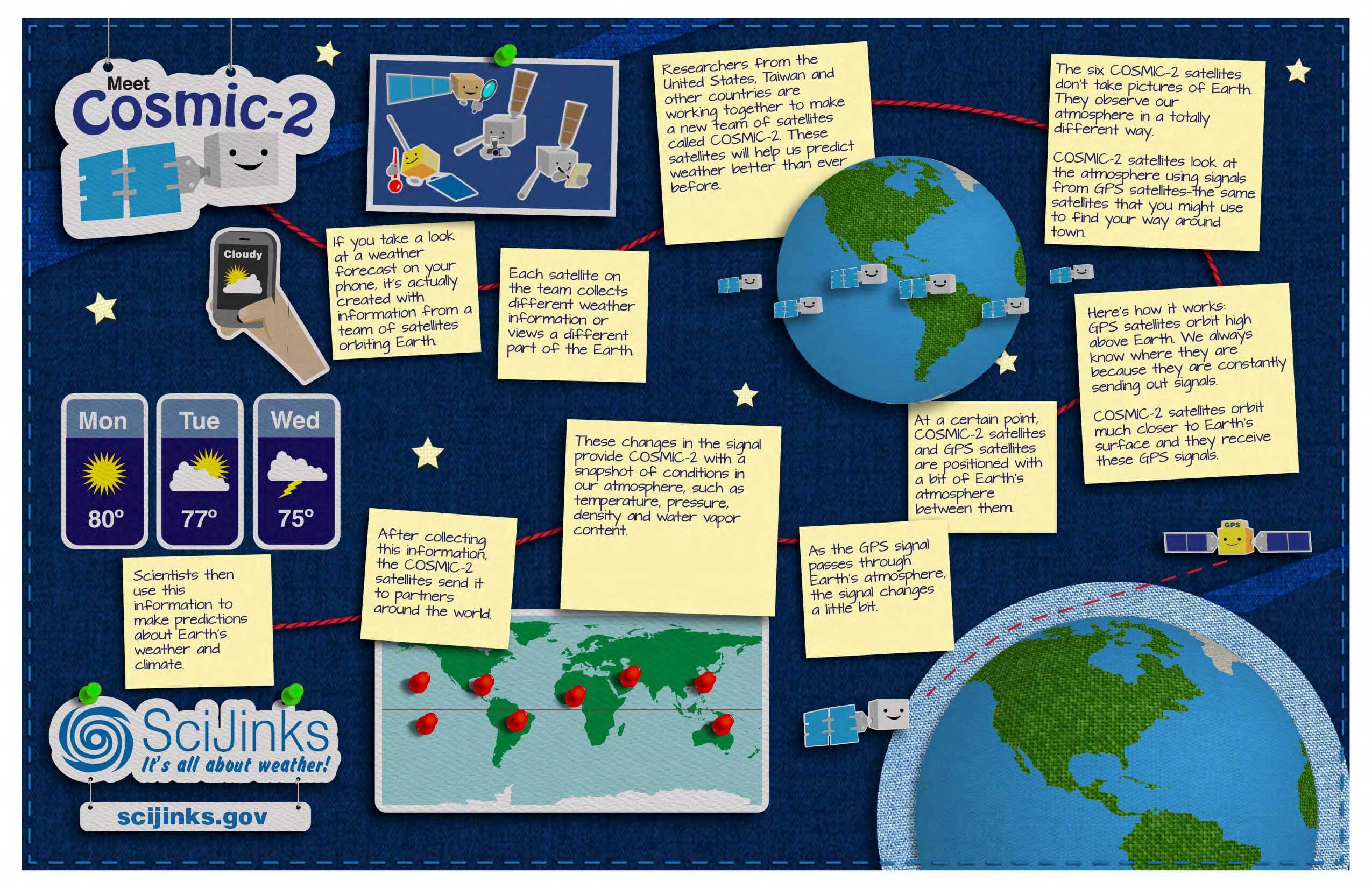Watch this video to meet Cosmic-2! Click here to download this video (1280x720, 93 MB, video/mp4).
Download a poster version of this video!

Click the above image to download.
Video transcript
If you have a big game tomorrow, your team might want to check the weather forecast to see if a storm is on its way.
That weather forecast is actually created with information from another team—a team of weather satellites orbiting Earth.
Weather satellites work in teams because each satellite has a different job to do. For example, each satellite might collect different information or view a different part of the Earth.
Researchers from the United States, Taiwan and other countries are working together to make a new team of satellites called COSMIC-2. These satellites will help us predict weather better than ever before.
COSMIC-2 is actually a team of six satellites. These satellites don’t take pictures of the Earth. They observe our atmosphere in a totally different way.
COSMIC-2 satellites look at the atmosphere using signals from GPS satellites—the same satellites that you might use to find your way around town.
Here's how it works:
GPS satellites orbit high above Earth. We always know where they are because they are constantly sending out signals.
COSMIC-2 satellites orbit much closer to Earth's surface and they receive these GPS signals.
At a certain point, COSMIC-2 satellites and GPS satellites are positioned with a bit of Earth's atmosphere between them.
As the GPS signal passes through Earth's atmosphere, the signal changes a little bit.
These changes in the signal provide COSMIC-2 with a snapshot of conditions in our atmosphere, such as temperature, pressure, density and water vapor content.
After collecting this information, the COSMIC-2 satellites send it to partners around the world.
Scientists then use this information to make predictions about Earth's weather and climate.
And you can use those predictions to make plans for your team!
Find out more about how we keep an eye on Earth's weather at NOAA SciJinks!




